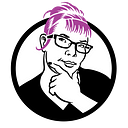Prior to the 1970s, it wasn’t recognized very widely. Most families shamed and/or silenced sex abuse victims, so therapists (who were almost exclusively male) didn’t hear their stories in the first place. Even when they did, they often assumed that it was an extremely rare occurrence — or that their (mostly female) patients were lying, delusional, or fantasizing.
It wasn’t until the self-awareness/personal growth movements, along with the feminist consciousness-raising movement, got big in the 70s that people began opening up about their childhood traumas. That’s when it became apparent that childhood sexual abuse was actually quite common. That, along with the fact that thanks to the women’s liberation movement, there were more women on the other side of the couch who would take their patients’ stories seriously.
By the 80s — my adolescent and teen years — child sexual abuse was considered so common as to be a joke. “Creepy uncle,” “Catholic priest,” and “Boy Scout leader” were caricatures, shorthand for all sexual abuse perpetrators.
Unfortunately I think the Satanic Panic was a case of the pendulum swinging too far in the other direction — with a little help from religious types that had a vested interest in “proving” Satan exists. And aided and abetted by tabloid media just looking for anything sensational enough to jack up their ratings.
